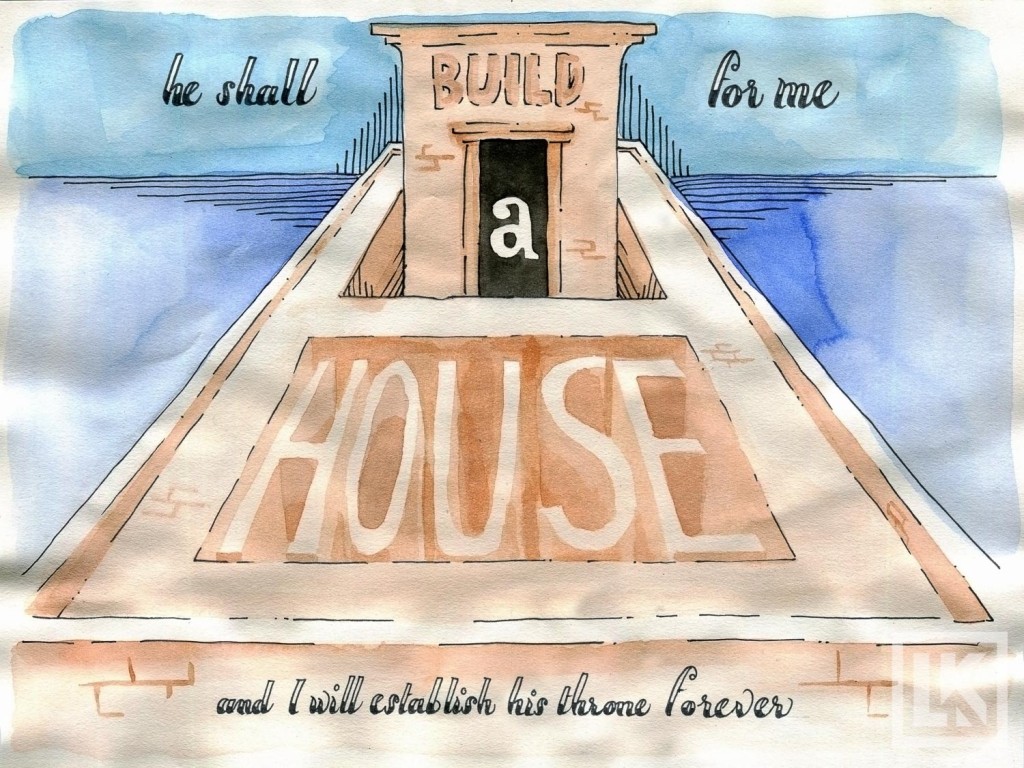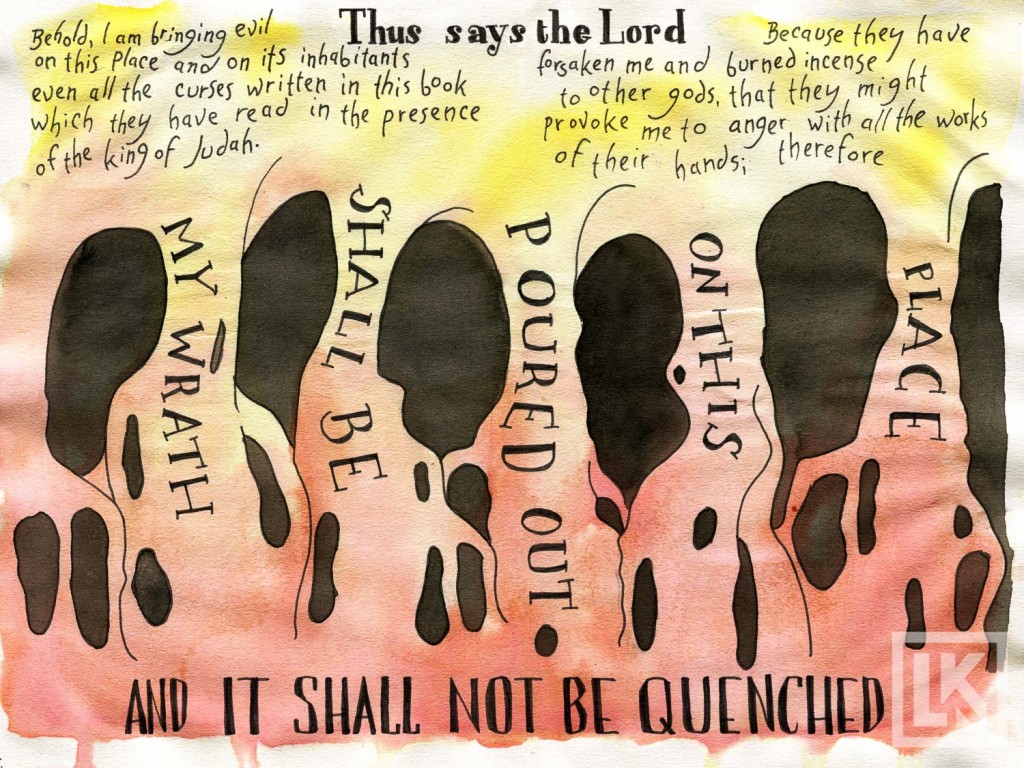![]() What if you had the job of communicating your nation’s entire history—its rulers, wars, religious events, economic cycles—starting with the beginning of mankind? First and Second Chronicles is that history for Israel. It’s the story of Israel’s kings and God’s faithfulness to His promises.
What if you had the job of communicating your nation’s entire history—its rulers, wars, religious events, economic cycles—starting with the beginning of mankind? First and Second Chronicles is that history for Israel. It’s the story of Israel’s kings and God’s faithfulness to His promises.
It’s a long story, and many Bible readers find it boring. Maybe that’s because the Chronicles account opens with a list of names—literally, “Adam, Seth, Enosh, Kenan, Mahalalel, Jared . . .” (1 Chr 1:1–2). The genealogies go on for nine chapters. But that’s not all there is to this document. First and Second Chronicles is an executive summary of God’s covenant with David, and how things played out afterward. The books tell this story in four major acts:
- From Adam to David. The first nine chapters cover all the time that takes place from Genesis 2 to First Samuel 15 (mostly via long genealogies). They trace David’s ancestry along with the other major families in the 12 tribes of Israel.
- David’s reign. David was a good king who followed God, united the tribes of Israel, and delivered the nation from her enemies. God makes an everlasting covenant with David: his son Solomon’s throne will be established forever (1 Chr 17). David draws up plans to make a great temple for the Lord. Before he dies, he charges Solomon and the people with building the temple and being faithful to the Lord (1 Chr 28:8–9).
- Solomon’s reign. When Solomon becomes king, he asks God for wisdom instead of riches, long life, or the deaths of his adversaries. God is pleased with his request, and grants him wisdom, plus extravagant riches and power. Solomon builds the temple of God in Jerusalem: a majestic house for His name. Israel flourishes under Solomon’s rule, becoming the most prominent nation in their region of the world (2 Chr 9:13–30).
- From Jerusalem to Babylon. The kingdom splits after Solomon dies: 10 tribes rebel and form a new kingdom to the North, while the tribes of Judah and Benjamin remain loyal to David’s royal line. This act gives us the highlights of each king’s reign. The kings that follow do not serve the Lord the way David did, however. They neglect God’s temple, they ignore God’s law, they persecute God’s prophets, and they seek out new gods. A few good kings bring about revival, but eventually God disciplines His people for forsaking Him—which is exactly what David warned would happen long ago. The Babylonians sack Jerusalem, raze the temple, and carry the children of Israel into captivity for 70 years. Afterward, the Persian king Cyrus decrees that the temple be rebuilt.
The Chronicles focus on two important themes: God’s covenant with David and the temple. As you read First and Second Chronicles, you’ll see that the temple of God is the main location of interest: David plans it, Solomon builds it, kings are crowned in it, prophets are killed in it, and the law is rediscovered in it. The temple is center stage in the drama of Chronicles.
Theme verses of 1 & 2 Chronicles
“He [Solomon] shall build for Me a house, and I will establish his throne forever.” (1 Chr 17:12)
“Thus says the Lord, ‘Behold, I am bringing evil on this place and on its inhabitants, even all the curses written in the book which they have read in the presence of the king of Judah. Because they have forsaken Me and have burned incense to other gods, that they might provoke Me to anger with all the works of their hands; therefore My wrath will be poured out on this place and it shall not be quenched.'” (2 Chr 34:24–25)
1 & 2 Chronicles’ roles in the Bible
The Chronicles were written sometime after the Hebrews returned to Jerusalem from Babylon—possibly by Ezra. The author, or Chronicler, surveys Israel’s history as a sovereign state. David and Solomon are the key characters, as they were the great kings who ruled all Israel from Jerusalem. The Chronicles record the history of kings through two lenses:
- The Mosaic Covenant, which God made with all Israel after delivering them from Egypt. In this covenant, God sets Israel apart as His special nation. The terms: if Israel obeys God’s laws, He blesses them, but if Israel rejects God’s laws, He disciplines them. The documents of this agreement are known as the Law of Moses, or the Pentateuch: they’re the first five books of the Bible.
- The Davidic Covenant, which God made to David. David had planned to build a house for God, but God instead promises to establish David’s family on the throne forever. God is faithful to His promise: even when the northern tribes of Israel rebel, God keeps David’s line on the throne in Jerusalem. The Davidic Covenant is later realized in Jesus Christ, who is called both the Son of David and King of Kings (Mt 1:1; Rev 17:14).
First and Second Chronicles cover all Hebrew history from the creation of Man (Gn 2:20; 1 Chr 1:1) to the Hebrews’ return from exile (2 Chr 36:22–23; Ezra 1:1–4). The content in Chronicles also reflects Moses’ predictions in Deuteronomy:
- Anointing of a righteous king (Dt 17:14–20)
- Establishment of a temple where God’s name dwells (Dt 12:5–14)
- Prosperity when Israel obeys God under David and Solomon (Dt 28:1–14)
- Exile when Israel disobeys God (Dt 28:49–50)
- Restoration to the promised land (Dt 30:3)
The books of Chronicles are long. They’re full of genealogies and records. But they’re the records of God’s long-lasting faithfulness to His people, even when they are not faithful to Him.
Quick outline of 1 & 2 Chronicles
- From Adam to David (1 Chr 1–9)
- David rules and unites Israel (1 Chr 10–29)
- Solomon builds the temple (2 Chr 1–9)
- From Jerusalem to Babylon (2 Chr 10–36)
More pages related to 1 & 2 Chronicles
- Ezra (next book of the Bible)
- 1 & 2 Kings (previous)
- 1 Samuel
- 2 Samuel
- Nehemiah (Ezra part two)
- Matthew (presents Jesus as the Son of David, King of the Jews)
- Guide to the 12 tribes of Israel
- Why 1 & 2 Chronicles are so boring (and how to change that)





